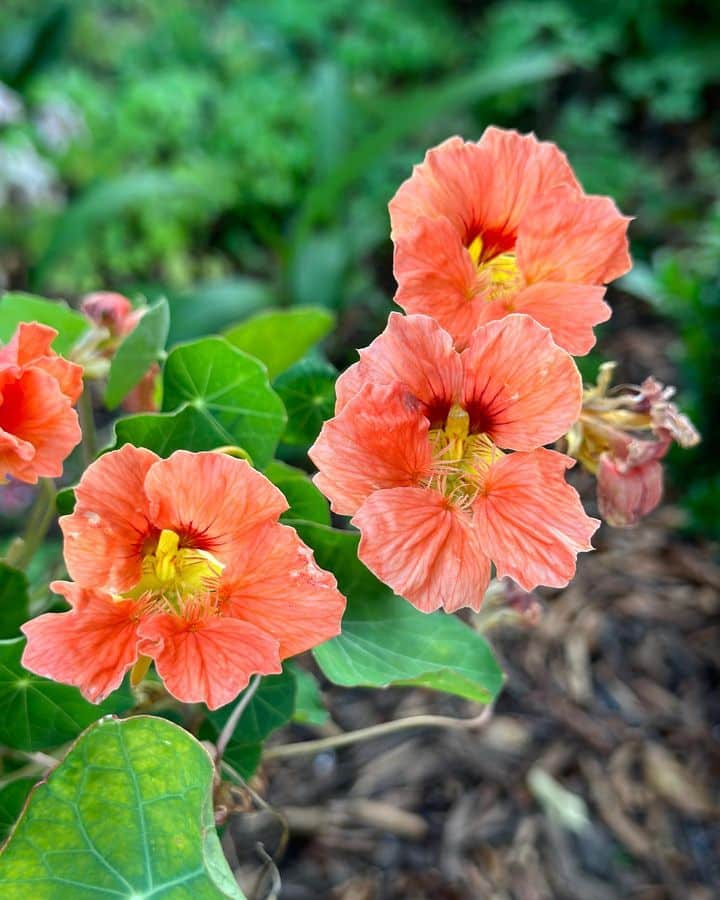Do not worry if your Nasturtiums leaves all fall and dry up by the end of autumn, as your zone might not support perennials.
So, raising Nasturtiums as annual or perennial is under your control. Continue the article to learn the trick.
Table of Contents Show
Are Nasturtiums Invasive?
Nasturtiums (Belonging to Tropaeolaceae Family) are invasive in warmer zones because of their moderate to fast growth rate and self-seeding capability.
In a single growing season, their semi-trailing vines reach 3 feet, while one of its varieties, the climbing Nasturtium, reaches 12 feet.
Looking at the growth size, this plant spread a lot but not in all zones.

Also, Nasturtiums give out flowers from summer until the first frost in colder zones, producing seeds that self-seed to return year after year.
So if left without pruning and deadheading, the Nasturtiums can take over your garden in perennial zones.
But usually, they do not harm companion plants during their growth and can act as a weed barrier.
Are Nasturtiums Annuals or Perennials?
Exacting whether the Nasturtiums are annuals or perennials without keeping them under criteria can cause setbacks.
Generally, the Nasturtiums are cool climate lovers that bloom all summer till fall if the temperature is around 55-65ºF and are intolerant to cold days.
However, if all the growing condition meets, your Nasturtiums can be a perennial that can overwinter the mild cold of Zone 9 to 11.
Plant Nasturtiums seed in Zone 9, 10, and 11 for perennials by September or October as the days are cooler.
And ensure to provide partial shade during afternoon days to let the plant survive blazing heat.
In contrast, if you wish to enjoy it as an annual, you need to plant the Nasturtium seeds in zone 4, 5, 6, 7, and 8 after the last frost day in early spring.
How To Grow Shortlived Nasturtiums As Perennials?
The surrounding climate is the inducing factor that can make short-lived Nasturtiums show perennial characteristics.
Even a Nasturtium variety with a lifespan of a single year can extend its lifecycle under proper care and maintenance.
- Choose the suitable variety: Some Nasturtium varieties are cold-hardy and can thrive through the coldest days. So choose the right one if you plan to grow them outdoors by consulting the nearby nursery or stock dealer.
- Plant in a pot for colder zones: Pots are always safe options for Nasturtiums as you can bring them indoors before the cold hits. Meanwhile, they go well as hanging or trailing plants, so using hanging baskets will be fine.
- Provide winter protection: Although Nasturtiums are cool-season plants, they cannot tolerate freezing temperatures. So mulch the base of plants with bark chips, straw, or leaves, or use a frost blanket or burlap sack.
- Deadhead the flowers: Nasturtiums benefit from removing spent flowers as it helps to preserve their energy and focus on growth. You can deadhead the plant by pinching them off or snipping it using a pruner.
- Timely fertilization: Providing the plant with monthly balanced fertilizer can help keep Nasturtiums happy, promoting next year’s growth.
From Editorial Team
Extra Tips!
Bringing Nasturtiums for landscaping might be your only plan for the season. But try using Nasturtiums leaves and flowers in dishes, as they are entirely edible.
Some readily available Nasturtium varieties are Alaska, Black Velvet, Empress of India, Gleam, Jewel series, and Vesuvius.
Glow Your Garden!


